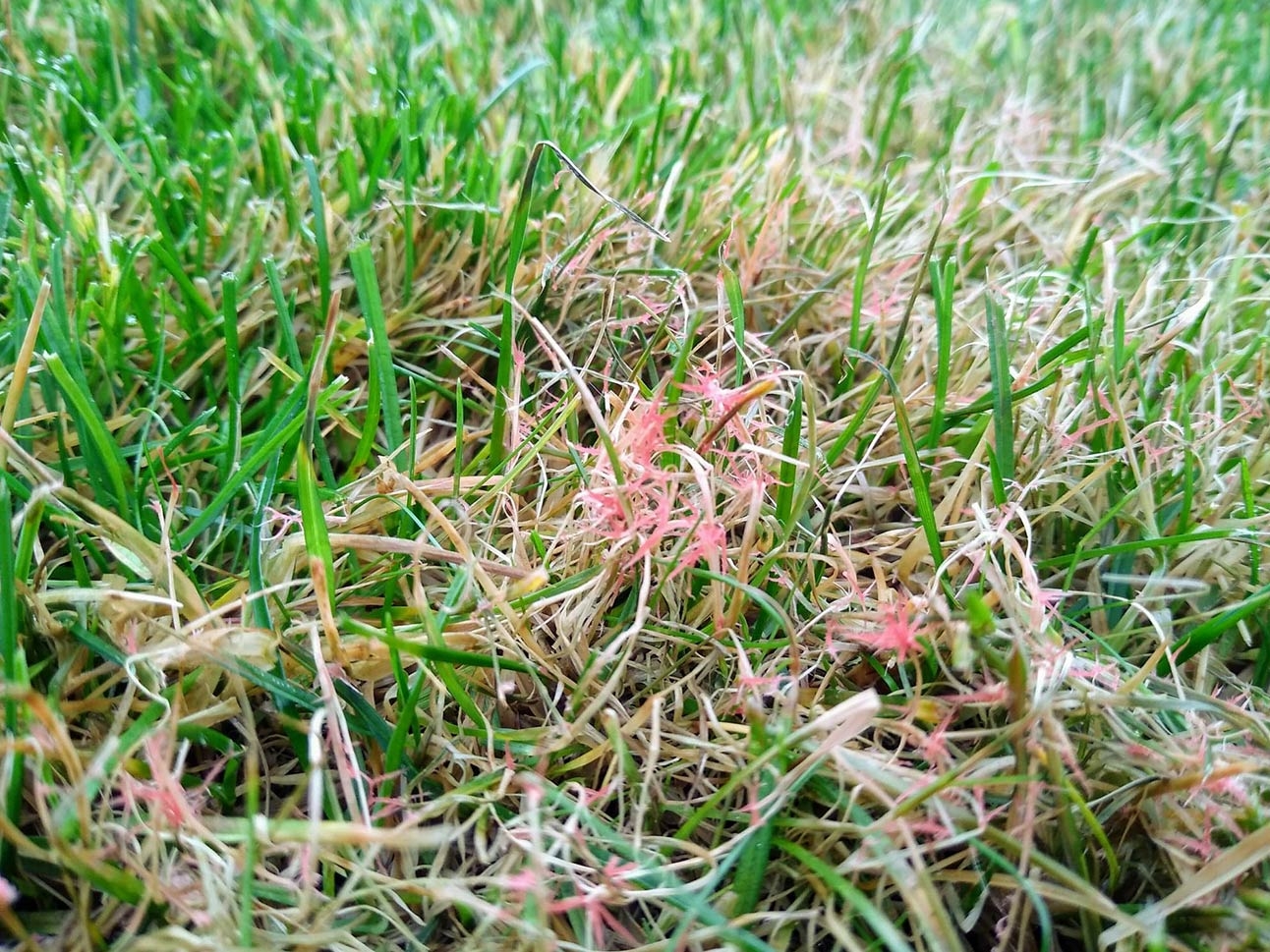Red Thread Disease
Maintaining the quality of your lawn
Lawns need treatment all year round.
Weeds, moss and diseases are a continuous threat in our largely cool, damp climate!
What is Red Thread?
Red thread is a fungal disease which attacks the grass plant when conditions suit - often in warm and wet summer months. It will show up as pink red patches in your lawn while the disease is active.
When the attack passes it will leave straw coloured, disfigured patches of grass leaves behind, sometimes for up to several weeks.
The disease does not impact the root of the plant, thereby the grass leaves make a full recovery. Disfiguration to the turf is temporary, but these areas may be unsightly for a time.
How do we treat Red Thread?
Prevention is better than cure. There are a number of factors which can accelerate a red thread disease outbreak. As discussed, if the weather conditions are suited there will be small areas within every lawn. However, we can be proactive in making sure there is enough airflow and light to the lawn, allowing it to dry during the wet summer periods.Blunt or unbalanced mower blades aid red thread. If the cut is not clean, grass leaves are damaged and are open to a disease attack.
Our Lawn Care Treatment Programme provides the calculated nutrition to help in both resisting red thread, and aiding recovery should any disfigurement take place as a result of the disease.
Reducing thatch via Aeration and Scarification along with Overseeding the lawn with a more disease tolerant mix is something that we may recommend based on our lawn survey findings.
We do not view fungicides as a viable option on lawns. Red thread is a common disease that will not kill the grass and could be retriggered weeks later should warm and wet weather conditions persist, even if expensive fungicides are used.
Why do we need to treat Red Thread?
Red thread will rarely kill the grass completely, the patches will recover with appropriate remedial action.
Spread of the disease can occur by airborne or waterborne spores, or on contaminated tools or shoes. Prolonged leaf wetness is required for infection, so red thread is most likely to be a problem in wet summers and during heavy dews in autumn.
How Red Thread can be prevented
The best way to avoid red thread disease is to create conditions that the fungus doesn’t like. We are unable to control temperature, but we can make sure that your grass drains as well as possible.
Trim trees and bushes to make sure there is plenty of ventilation to help evaporate surface moisture. We recommend Lawn Aeration on an annual basis to improve drainage. Scarifying removes thatch which often harbours fungal spores.
Feeding the lawn is a good measure to help a red thread attack grow out, but ideally we would look to address the cause firstly. A calculated fertiliser programme, rather than an as-and-when approach, will keep the grass strong and healthy and help the lawn to overcome isolated red thread when the weather conditions suit.


